India is a land of diversities. India might have made it to the 21st century and modernization might have taken over substantially, but its historical sites and diverse lifestyle and culture have preserved themselves very well. They still have the ability to knock anybody’s senses down & raise their excitement, both infinitely. To talk about the historical sites in India, they have the aura that reminds us of the culture the places have carried along with themselves throughout years.
India’s historic sites and culture have been an attraction not only for the Indians but also for the foreign visitors. India is a vast South Asian country with such a diverse terrain ranging from the Himalayan peaks to the coastline of Indian Ocean and of course its history reaching back 5 millennia. In the north, the landmarks of Mughal Empire include Delhi’s Red Fort and Jama Masjid mosque, plus Agra’s archetypal Taj Mahal mausoleum. Pilgrims bathe in the Ganges in Varanasi, and Rishikesh is a yoga center and base for Himalayan trekking.
Out of all listed below are the 15 eye-catching and must-visit historical sites in India that any traveler or history lover might love to encounter.
Top Most Historical Sites in India
Table of Contents
1. Taj Mahal, Agra

A structural metaphor of love and an epitome of Mughal architecture, Taj Mahal is one of the most well-known identifiers of India and also one of the new seven wonders of the World. It is completely built with white marble and its grandeur and architecture have the ability to leave you enthralled. The Mughal emperor Shah Jahan built this exemplary for his wife Mumtaz Mahal to profess his love for her. It is situated in Agra and so the streets of Agra will be an addon to this visit.
2. Virupaksha Temple, Hampi

The exquisite city Hampi of Karnataka is home to some of the most breathtaking temples that exist. The Virupaksha Temple is definitely one of them. It is one of the most astonishing marvels ever discovered. It has the sculptures of Lord Shiva carved on its stones. Built under the ruler Deva Raya II of the great Vijayanagara Empire is a UNESCO World Heritage site in Hampi.
3. Khajuraho Temples, Khajuraho
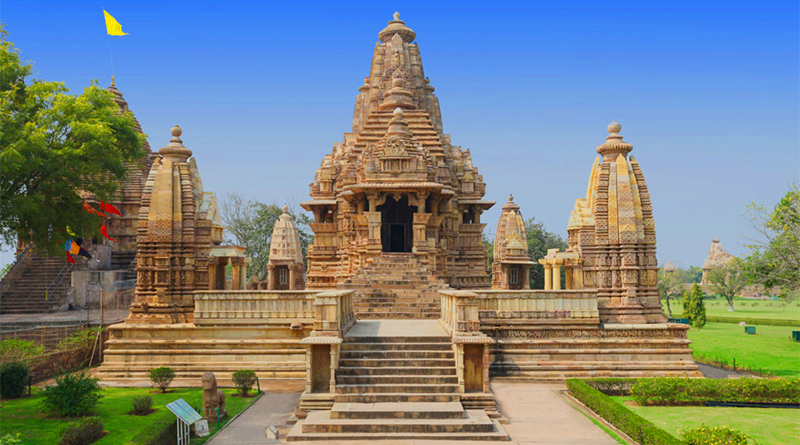
Khajuraho Temples are built in a small city named Khajuraho, still, its profound beauty has managed to make its place in UNESCO’s list of Heritage Sites, and it also ranks pretty higher in the list of Historical Sites in India. Built by Chandelas, this group of Hindu and Jain temples represents acceptance and respect for different religions at that time. All temples, barring one, are faced towards the east and shine beautifully at the break of dawn by sunrise.
4. Amer Fort, Jaipur
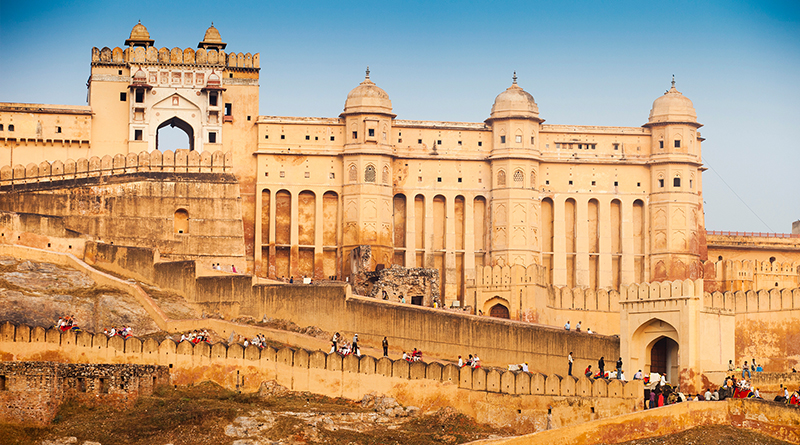
The Amer fort is located at the top of a hill called Cheel ka Teela and is secured by the Maota Lake. It’s bewitching architecture and lustrous red sandstone and marble is a different sort of attraction. It’s metaphorical elements engulfed in it, say Diwan-E-Khas, Diwan-E-Aam & the captivating Sheesh Mahal of course. You can also enjoy an elephant ride towards the Sun gate aka Surak Pol.
5. Qutub Minar, Delhi
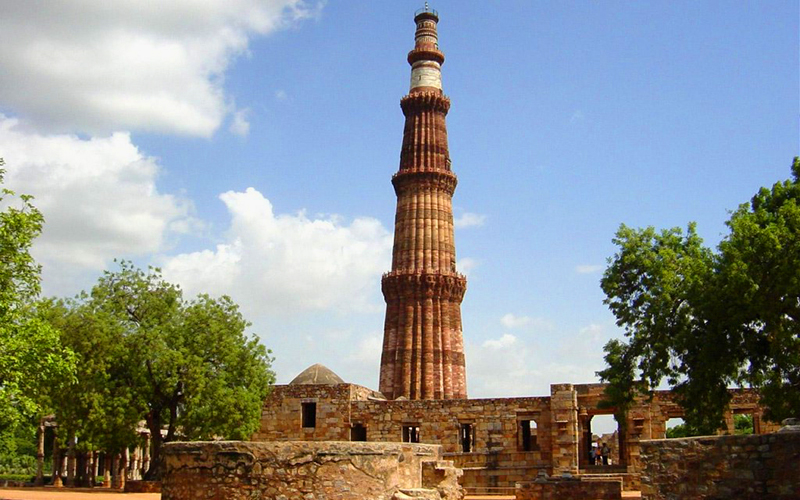
One of the tallest creations in the Indian history, Qutub Minar is named after Qutub Ud-Din-Aibak, who built it in the 19th century. Its red sandstone and traditionally done Iranian architecture make this spirea a famous tourist attraction.
6. Gateway of India, Mumbai
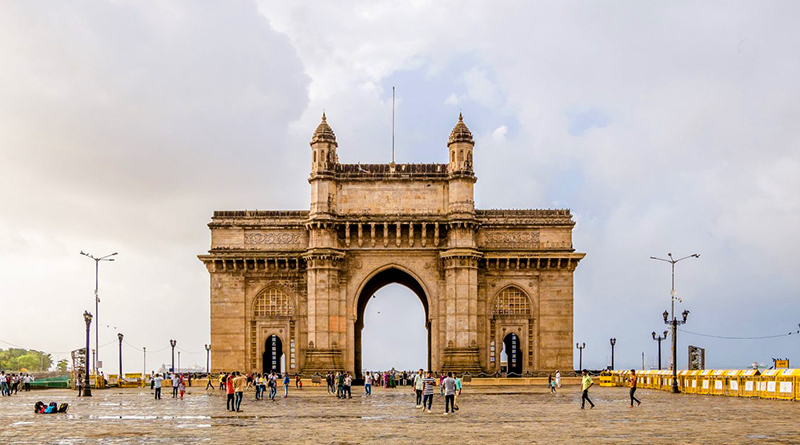
Gateway of India is one of the iconic landmarks of India, safeguarding the Mumbai Harbour, built by the Britishers in 1924. A happy place with street vendors stalling the local food items and balloons sellers adds on to make it a favorite picnic spot for tourists and locals as well.
7. Konark Sun Temple, Konark: A Devotee to The Sun God

The Prepossessing Konark temple is one the most terrific and alluring sites of Odisha. It’s architecture include mighty chariots, huge pillars, and walls, having Kalinga engraved in them. It was built by the great ruler of Ganga dynasty, the King Narasimhadeva I, along with 1200 craftsmen. The most interesting fact about this temple is that at the base of the temple are 12 wheels that are originally sundials that denote correct time.
8. Victoria Memorial, Kolkata
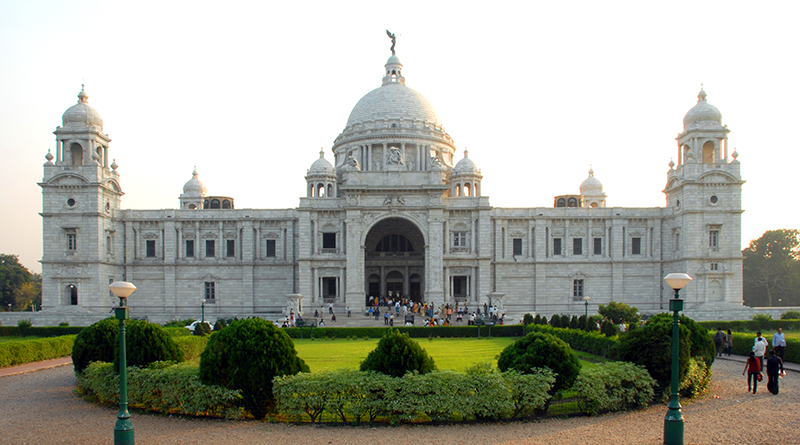
During the peak of British rule in India, the Viceroy Lord Curzon brought the idea of this monument. It is named after Queen Victoria and its 64 acres land coverage has the elegant white marble structure surrounded by lush green blankets of grass. A treasury filled with British archives including weapons, paintings, sculptures, etc and a royal portrait of the Queen is what you will witness in this beautiful place. One of the best paintings you will find here is the one by Russian artist Vassili Verestchagin. So, if you are an art lover, you know where to hop next.
9. Hawa Mahal, Jaipur: A Crowning Glory In The Pink City

Hawa Mahal was built by Maharaja Sawai Pratap Singh and Lal Chand Ustad and it was named after the fact that its structure was like a honeycomb with 953 sophisticated windows. It’s built in red and pink sandstone and was initially created for the royal ladies as a gallery through which they could peek through as they were mostly inside ‘purdah’. This palace is known as the tallest building in the world without any groundwork. The palace is curved but still stands firm due to its pyramidal shape.
10. Agra Fort, Agra: The Donjon of Red Sandstone
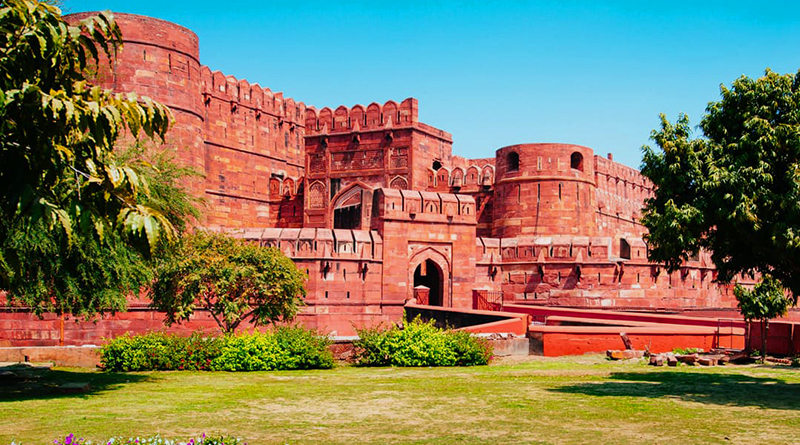
Agra Fort, one of the most famous historical places in India, was built in 1565 by Akbar. It is built entirely in red sandstone and currently is one of the favorite tourist spots, rhetorically with two gates: the Amar Singh Gate and the Delhi Gate. The entrance is through the Amar Singh Gate that unfolds an ancient city full of palaces, gateways, courts, passages, and mosques. This fort was the shooting location of the movie Jodha Akbar.
11. Kumbhalgarh, Mewar: The Jewel of Mewar
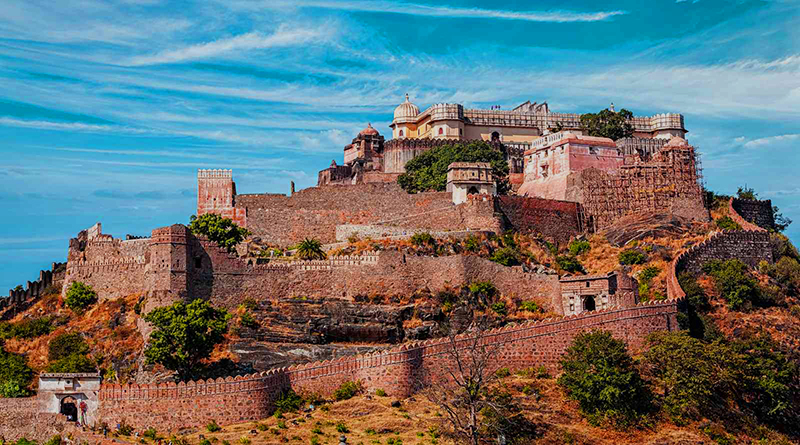
An assembling of History, Power, Royalty, and Culture are encased in this place. This spectacular disposition of temples was built during the rule of the Mauryas and its structure is a treat to eyes. There are 360 temples accommodated by this place out of which 300 are Jain temples and remaining 60 are Hindu temples. The Badal Mahal is also known as the “Palace of Clouds” grabs the major attraction here. The fort’s wall extends to 36 km in length and its breadth is said to be enough to take 8 horses abreast and is popularly known as “Great Wall of India.” The Kumbhalgarh Wildlife Sanctuary is home to the Indian wolf, sloth bear, striped hyena and more.
12. Basgo Monastery, Ladakh

Basgo Monastery is the foundation of the Buddhist tradition in the lands of Ladakh (J&K). Situated on the top of the hill, Basgo Monastery was built under the Namgyal kingdom. It was then the cultural-political center and so the value of the culture and heritage here is quite of importance. It gives some of the most beautiful sunsets views soaked in the rusty hue.
13. Rabdentse Ruins, Sikkim
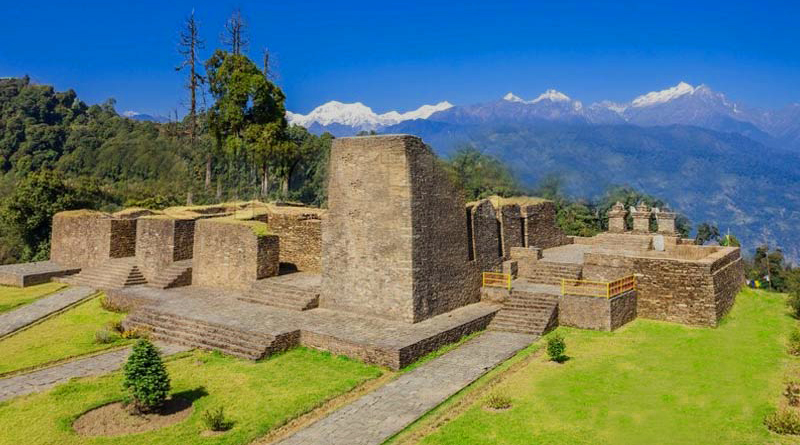
Rabdentse Ruins is an undisclosed treasure of the Indian historical time that even Indians don’t know about. Located towards the south-east of one of the oldest monasteries in Sikkim, the Ruins of the Rabdentse Palace is one of the major attractions in Sikkim. Established in 1670 by Tensung Namgyal, the 2nd Chogyal (king) of Sikkim, Rabdentse was the second capital of Sikkim till 1814 A.D after Yuksom. The palace cum monastery complex is almost in decays but now is conserved by the Archaeological Survey of India. A two-kilometer trek from the monastery brings you to these ruins.
14. Cellular Jail, Port Blair: A National Memorial
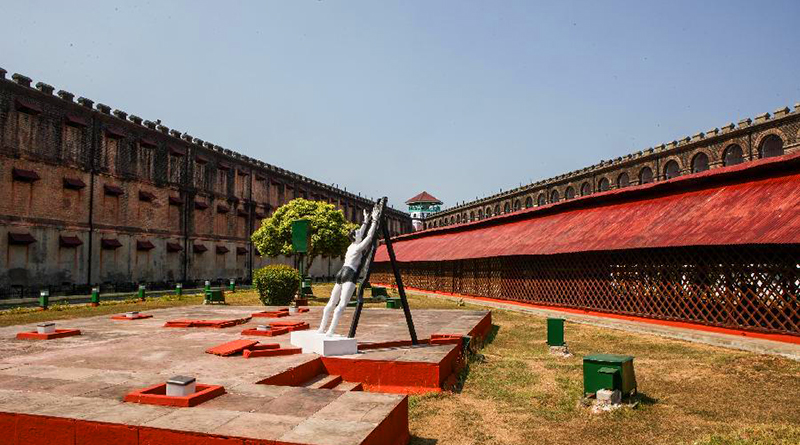
Prior to India’s Independence, many political prisoners and revolutionaries who fought for India’s freedom against the British rule were put into this penitentiary in Port Blair. Popularly known as Kala Pani, this jail was later converted into a museum and currently is one of the most heartbreaking antiquities of India’s imperialism. To know about the lives of the prisoners, you must attend the light and sound show that portrays it emotionally yet beautifully.
15. Ajanta Caves, Aurangabad

It is located near Aurangabad in Maharashtra and is famous for their beautiful carvings and paintings. The Ajanta caves are listed among the World Heritage Sites by the UNESCO. The cave temples are dedicated to Buddhism and date back to the time between 2nd century BC and 6th century AD witnesses the grand and beautiful carving, paintings and sculptures. Buy local artifacts made with the rocks of the Sahyadri Hills.
There are these 15 and there are more. India is a country with the strongest foundation in history. Each and every place has its own aura and different stories to amaze people. You can visit these places and get back to that time of the history when all of these were actually created. So, if you are someone who loves history and traveling as well, after this list, you know what to do and where to go 😉. While your way back home, you may like to buy gifts for your friends & relatives, so don’t forget to read the masterpiece suggesting unique gifts from India.
